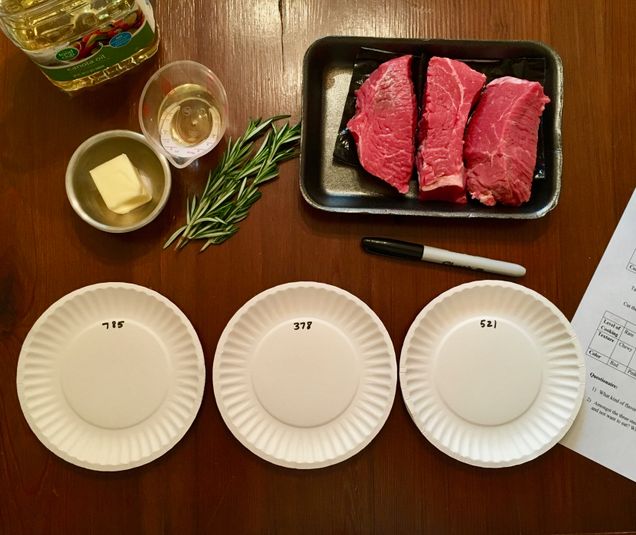The Curse of Connoisseurship
Discussions of the Boston Beverage Landscape
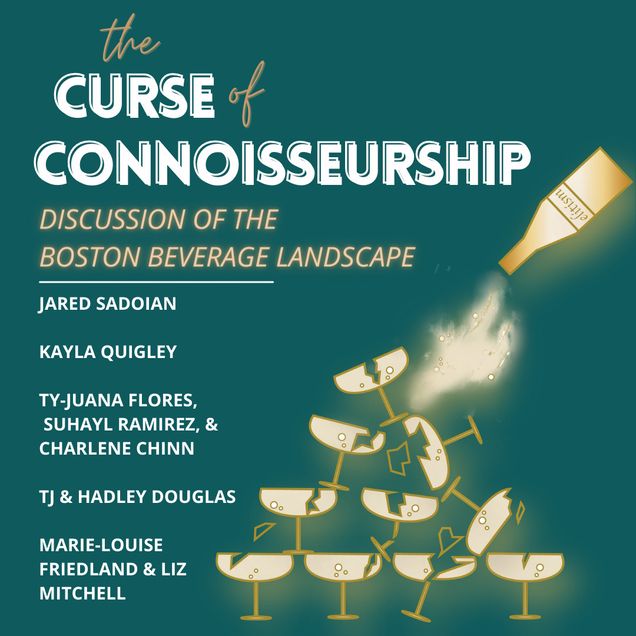
With its focus on expensive luxury goods, gatekeeping, and arcane learning, the world of wine and spirits is largely exclusive. The elitism associated with these products contributes to class differentiation, with some groups gaining from the involvement while others become marginalized. The field of beverage studies offers a platform to consider these intricate and previously unexplored aspects of classmaking.
To explore the related pitfalls in today’s beverage industry, Gastronomy students Amy Johnson and Altamash Gaziyani have organized a conference, The Curse of Connoisseurship: Discussions of the Boston Beverage Landscape. The program is hosted and funded by the Boston University Office of Diversity & Inclusion as part of the 2020-2021 Learn More series focused on the theme of social class.
Structured as a series of six webinars to be held on Tuesday and Thursday evenings during the month of March, the conference will address who is othered and made invisible as a result of underrepresentation in the wine and spirits industry. Gastronomy students and alumni will host these conversations, bringing together industry professionals from across the Boston beverage scene to discuss the existing barriers present within this community.
Conference sessions will foster conversations about the language, rhetoric, spaces, and events used to discuss, share, and sell wine and spirits. This virtual conference is broken down into six different discussions which are free and open to the public. Please register here to join in the conversation.
Tuesday March 2, 6 pm: Crafting the Back Bar: Capitalism vs. Classism, with Jared Sadoian, General Manager, Craigie on Main
Thursday, March 4, 6 pm: One Foot in the Saloon: Recreating Classist Spaces, with Kayla Quigley, local representative of Flor de Cana, a fair trade certified, natural rum company.
Tuesday, March 9, 6 pm: Creating Hospitality Through Diversity, with TJ & Hadley Douglas, owners of the award-winning wine shop Urban Grape, in Boston’s South End.
Thursday, March 11, 6 pm: We Deserve, with Ty-Juana Flores, Creator/Founder, Suhayl Ramirez, Industry Attaché, and Charlene Chinn, Business Strategist, TFLUXÈ. The TFLUXÈ mission is to diversify, disrupt, and demystify the landscape of the wine industry one sip at a time through curated virtual events for a growing community of BIPOC consumers.
Tuesday, March 16, 6 pm: Reckoning with Power Dynamics in the Wine World, with Marie-Louise Friedland (Sommelier & Graduate Student) & Liz Mitchell (Advanced Sommelier, CMS)
Thursday, March 18, 6 pm, conference De-Brief Session: Let’s Discuss: Inclusivity in the Beverage Industry
Conference Registration link: https://bostonu.zoom.us/meeting/register/tJcrd-itpj0rHdbSpyOOrUvjB_6JhsAfr6Uz
Hungry Nation: Food, Famine, and the Making of Modern India
Professor Benjamin Siegel will speak in our Spring 2021 Pépin Lecture Series in Food Studies & Gastronomy on his book Hungry Nation: Food, Famine, and the Making of Modern India.
| Hungry Nation: Food, Famine, and the Making of Modern India |
| Friday, March 26 at 12 pm, EST. |
| Online program: please register here to receive a link to the webinar. |
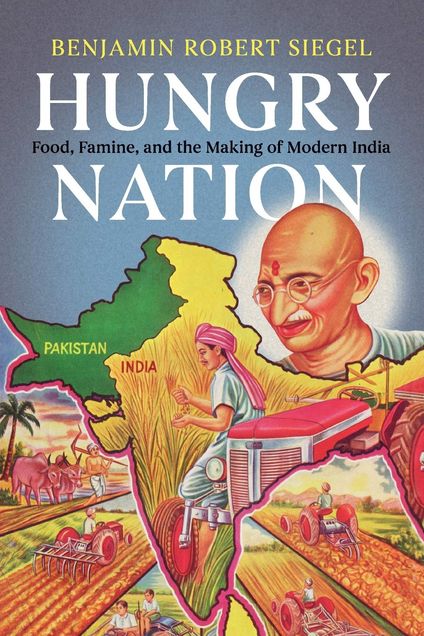 Hungry Nation: Food, Famine, and the Making of Modern India is an ambitious and engaging new account of independent India's struggle to overcome famine and malnutrition in the twentieth century traces Indian nation-building through the voices of politicians, planners, and citizens. Siegel explains the historical origins of contemporary India's hunger and malnutrition epidemic, showing how food and sustenance moved to the center of nationalist thought in the final years of colonial rule. Independent India's politicians made promises of sustenance and then qualified them by asking citizens to share the burden of feeding a new and hungry state. Foregrounding debates over land, markets, and new technologies, Hungry Nation interrogates how citizens and politicians contested the meanings of nation-building and citizenship through food, and how these contestations receded in the wake of the Green Revolution. Drawing upon meticulous archival research, this is the story of how Indians challenged meanings of welfare and citizenship across class, caste, region, and gender in a new nation-state.
Hungry Nation: Food, Famine, and the Making of Modern India is an ambitious and engaging new account of independent India's struggle to overcome famine and malnutrition in the twentieth century traces Indian nation-building through the voices of politicians, planners, and citizens. Siegel explains the historical origins of contemporary India's hunger and malnutrition epidemic, showing how food and sustenance moved to the center of nationalist thought in the final years of colonial rule. Independent India's politicians made promises of sustenance and then qualified them by asking citizens to share the burden of feeding a new and hungry state. Foregrounding debates over land, markets, and new technologies, Hungry Nation interrogates how citizens and politicians contested the meanings of nation-building and citizenship through food, and how these contestations receded in the wake of the Green Revolution. Drawing upon meticulous archival research, this is the story of how Indians challenged meanings of welfare and citizenship across class, caste, region, and gender in a new nation-state.
Benjamin Siegel is Assistant Professor of History at Boston University. His transnational archival work places South Asia at the center of global economic, environmental, and bodily transformations. Professor Siegel's work has been published in the Caravan, the Christian Science Monitor, Contemporary South Asia, Humanity, the International History Review, the Marginalia Review of Books, Modern Asian Studies, the World Policy Journal, VICE, and other journals and edited volumes. He received his B.A. from Yale University and his A.M. and Ph.D. from Harvard University, where his dissertation won the 2014 Sardar Patel Award given by the Center for India and South Asia at UCLA, honoring "the best doctoral dissertation on any aspect of modern India."
We thank the Jacques Pépin Foundation for sponsorship of this lecture series.
Diners, Dudes & Diets: How Gender & Power Collide in Food Media & Culture
The Gastronomy Program is pleased to announce that the first program in the Spring 2021 Pépin Lecture Series in Food Studies & Gastronomy will feature Gastronomy Program alumna Emily J. H. Contois (MLA 2013), speaking on her recently published book, Diners, Dudes & Diets: How Gender and Power Collide in Food Media and Culture.
| Diners, Dudes & Diets: How Gender and Power Collide in Food Media and Culture |
| Friday, February 19 at 12 pm, EST. |
| Online program: please register here to receive a link to the webinar. |
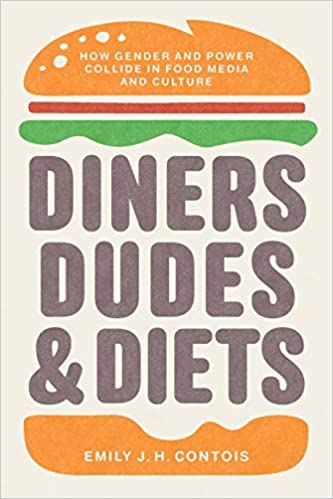 The phrase "dude food" likely brings to mind a range of images: burgers stacked impossibly high with an assortment of toppings that were themselves once considered a meal; crazed sports fans demolishing plates of radioactively hot wings; barbecued or bacon-wrapped . . . anything. But there is much more to the phenomenon of dude food than what's on the plate. This provocative book begins with the dude himself—a man who retains a degree of masculine privilege but doesn't meet traditional standards of economic and social success or manly self-control. In the Great Recession's aftermath, dude masculinity collided with food producers and marketers desperate to find new customers. The result was a wave of new diet sodas and yogurts marketed with dude-friendly stereotypes, a transformation of food media, and weight loss programs just for guys.
The phrase "dude food" likely brings to mind a range of images: burgers stacked impossibly high with an assortment of toppings that were themselves once considered a meal; crazed sports fans demolishing plates of radioactively hot wings; barbecued or bacon-wrapped . . . anything. But there is much more to the phenomenon of dude food than what's on the plate. This provocative book begins with the dude himself—a man who retains a degree of masculine privilege but doesn't meet traditional standards of economic and social success or manly self-control. In the Great Recession's aftermath, dude masculinity collided with food producers and marketers desperate to find new customers. The result was a wave of new diet sodas and yogurts marketed with dude-friendly stereotypes, a transformation of food media, and weight loss programs just for guys.
In a work brimming with fresh insights about contemporary American food media and culture, Contois shows how the gendered world of food production and consumption has influenced the way we eat and how food itself is central to the contest over our identities.
Emily J.H. Contois is an Assistant Professor of Media Studies at The University of Tulsa. Her research and writing span the breadth of food, health, and identity in popular culture and media. She has appeared on CBS This Morning, BBC Ideas, and Ugly Delicious with David Chang on Netflix. She earned her PhD in American studies at Brown University and holds master's degrees in public health from UC Berkeley and gastronomy from Boston University. She lives in Tulsa with her husband and their rescue pup, Raven.
Note: anyone interested in purchasing a copy of Diners, Dudes & Diets from UNC Press can get a 40% discount using code 01DAH40.
We thank the Jacques Pépin Foundation for sponsorship of this lecture series.
New Gastronomy and Food Studies Students, Spring 2021 part 3
We look forward to welcoming a wonderful group of new students into our programs this spring. Enjoy getting to know a few of them here.
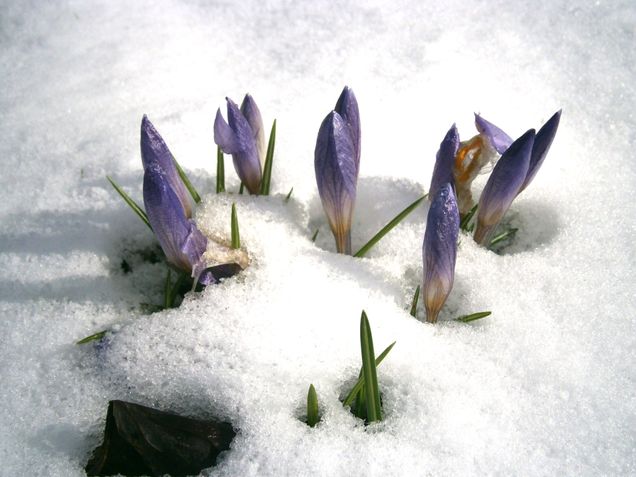
Josephine Accarrino grew up loving the pleasures of the table. Food, alongside its traditions, always played a starring role in all her family get-togethers. 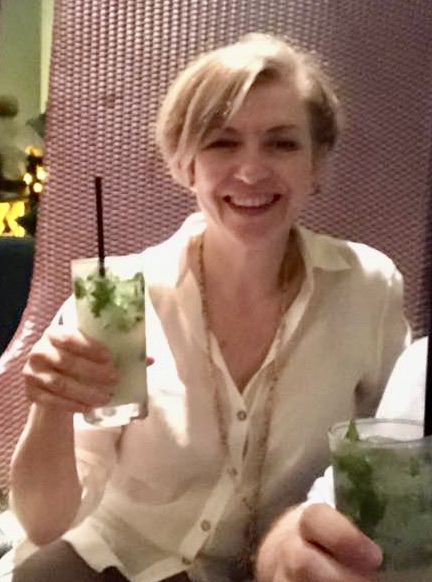 Her family’s old-world traditions contrasted with friends’ traditions and stories were often traded over the different ways food was celebrated in family gatherings. In Toronto, where Jo was born and bred, a car drive of 20 minutes in any direction allows access to food from myriad cultures. In Josephine’s life, food always served as a window into culture and society.
Her family’s old-world traditions contrasted with friends’ traditions and stories were often traded over the different ways food was celebrated in family gatherings. In Toronto, where Jo was born and bred, a car drive of 20 minutes in any direction allows access to food from myriad cultures. In Josephine’s life, food always served as a window into culture and society.
For the first years of her working adult life, Josephine taught grades 4 – 10 after obtaining her BSc from University of Toronto and her B.Ed from the University of Western Ontario. After her first child, she transitioned, with the help of a MSc from Drexel University, to a career in clinical research, where she successfully grew and managed a boutique research firm, and evened up the family with a second child. Lucky enough to have wound down the company just before the pandemic hit, Covid restrictions gave Josephine time to reflect on what mattered most to her. Not surprisingly, she came back to food, people and culture. In truth, these three loves never really left – travelling the world for work and pleasure afforded Josephine the deep satisfaction of delving into different cultures through their relationship with food. Josephine will never be sure if she found the Certificate Program in Food Studies at Boston University Food or if it found her; either way, she is very excited to begin this next phase of her journey.
Born and raised in Cleveland, Ohio, Hannah Billingsley spent her formative years riding horses and watching Martha Stewart. She 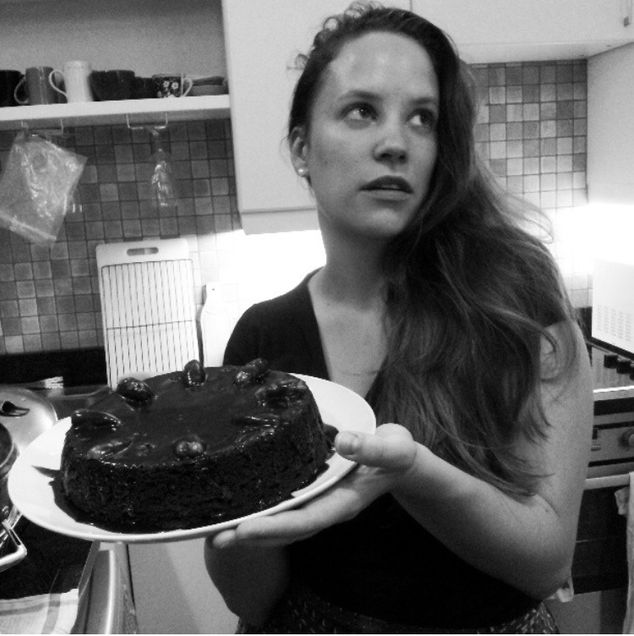 did a gap year between high school and college in Cape Town, South Africa before ending up in NYC, where she graduated from Columbia University in 2010 with a BA in African Studies.
did a gap year between high school and college in Cape Town, South Africa before ending up in NYC, where she graduated from Columbia University in 2010 with a BA in African Studies.
A love of contemporary photography has led her down a winding career path, and she returned to her beloved Cape Town to live and work from 2013 to 2019. A few years in the art world eventually led to work in academic publishing at Pearson South Africa, which she continues today as a freelance editor, in addition to her work as a copywriter. A life-long love of pie and baking saw her introduce American-style fruit pies to Cape Town via her pie stand at one of the city's weekly food markets. She also has spent the past couple of years learning French and was able to live in France for three months in 2019, an opportunity which allowed her to start thinking seriously about studying food.
Discovering the writings of Wendell Berry, Jean Vitaux, Robin Wall Kimmerer and Clarissa Dickson Wright over the past three years has been a significant experience to say the least and intensified her belief that many of the world's problems relate to issues around food and farming. Through the certificate course at BU, she hopes to find her 'purpose' within food studies, while learning more about her particular interests in regenerative farming, proper animal husbandry, home economics and the possibility of food to function as a diplomatic tool.
As a Chinese American, food has always been a pillar to Catherine Blewer's identity. She finds nothing more comforting than a bowl 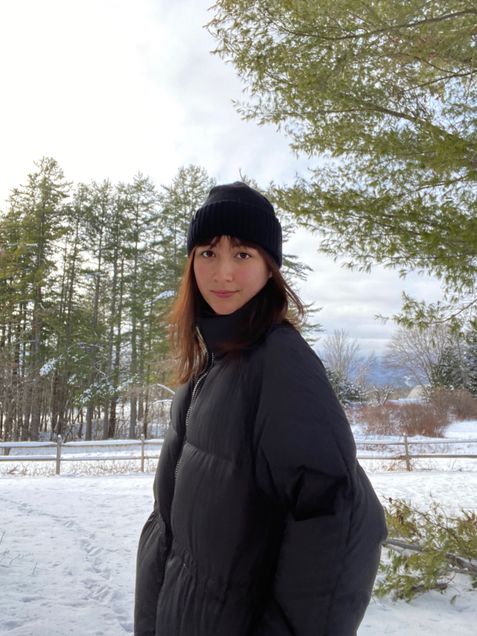 of congee. While she is biased toward Chinese food she also greatly enjoys exploring other types of cuisine. She often craves seafood and looks forward to living in Boston where she will be much closer to the Wellfleet oyster.
of congee. While she is biased toward Chinese food she also greatly enjoys exploring other types of cuisine. She often craves seafood and looks forward to living in Boston where she will be much closer to the Wellfleet oyster.
Catherine graduated from Union College majoring in Visual Arts. She also received a Certificate in Cooking from the New England Culinary Institute and has worked on the line at a couple of restaurants. She now works for a small Virtual Events company that teaches Sushi Rolling and Bubble Tea helping build out their quality assurance department and hone their creative brand.
Catherine hopes to learn as much as she can while studying at BU and further orient her career into the food world. In particular, she hopes she can apply what she learns to help the small business she works for as well as helping the restaurant community recover after the pandemic.
Beyond food Catherine really enjoys true crime, photography and a good book. She currently lives in New York where she is from with two roommates and many plants.
Sabina Michelle Routon is a polymath who doesn’t actually enjoy math all that much. She does enjoy learning languages, writing,  drumming, learning about finance, making jam, telling stories, conducting choirs, and completing the first half of any given crochet project. Because she enjoys these things, she chose not to major in any of them and instead got her B.S. degree in Family Studies, emphasizing human sexuality and family systems, from Brigham Young University. She minored in Linguistics and spun cymbals in the marching band, taking various classes in theater-makeup, rhetoric, and Russian literature so she would have something to talk about at parties.
drumming, learning about finance, making jam, telling stories, conducting choirs, and completing the first half of any given crochet project. Because she enjoys these things, she chose not to major in any of them and instead got her B.S. degree in Family Studies, emphasizing human sexuality and family systems, from Brigham Young University. She minored in Linguistics and spun cymbals in the marching band, taking various classes in theater-makeup, rhetoric, and Russian literature so she would have something to talk about at parties.
Sabina received her culinary education through the then-pioneering online program from Escoffier School of Culinary Arts; she has since earned a certificate in entrepreneurship from LDS Business College and an industry certification as a professional resume writer and career coach. She taught scores of community cooking and gardening classes in Provo, Utah, and spent many years as a caterer, recipe developer, and artisan baker. Over the years, she discovered an interest in bean-to-bar chocolate, a love for learning the use and history of spices and herbs, and an unexpectedly deep-rooted excitement about apples.
Though these interests seem disparate to some, Sabina looks forward to bringing the best of them to bear through her gastronomy studies at BU and beyond. She is passionate about community self-reliance, sustainability and hunger-relief efforts. Of all of her professional and academic interests, her deepest fulfillment comes through building systems to help individuals and communities thrive.
She looks forward to working with others to strengthen food systems around the globe, particularly in the wake of Covid-19 and other recent disasters.
Sarah Lindsey hasn’t been in school for a while. Last time she was, she was earning her BFA in theater from NYU. It was the 90’s and 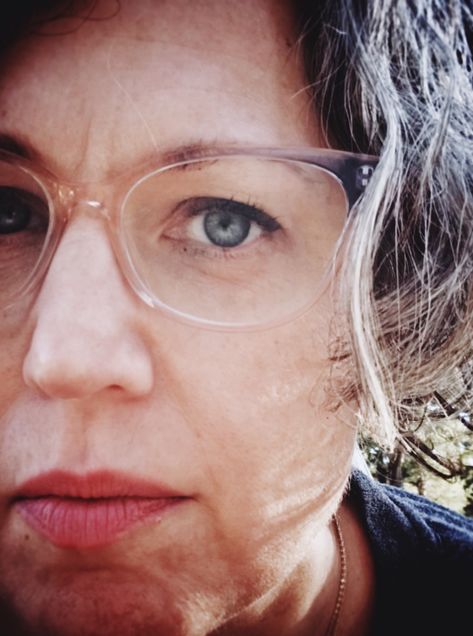 the city was filled with possibilities and brunch. Five years later, with the possibilities starting to seem less likely to pay off, she took a hospitality job in the USVI. Before she knew what was happening, she was applying for a job as a chef on a charter sailing yacht. In the interview, the boat owner asked where she had worked as a chef before. She replied, “I haven’t, but I lived in NYC for 10 years and ate in a lot of restaurants, so I know how food should look and taste.”
the city was filled with possibilities and brunch. Five years later, with the possibilities starting to seem less likely to pay off, she took a hospitality job in the USVI. Before she knew what was happening, she was applying for a job as a chef on a charter sailing yacht. In the interview, the boat owner asked where she had worked as a chef before. She replied, “I haven’t, but I lived in NYC for 10 years and ate in a lot of restaurants, so I know how food should look and taste.”
Somehow that bit of bravado paid off. She got the job and realized she loved not just eating food, but cooking it. She moved on to a second yacht job, then back to land where she kept cooking and developing recipes and menus, working for a small, family run business. It seemed the next step should be starting her own small, family run business - an investment to take her through the next stage of life while raising her daughter. Turns out you need more than bravado and good food to run a restaurant these days. Without coproprate backers, or (frankly) business know-how, the restaurant came to an untimely end, leaving Sarah to rethink that next stage of life.
Sarah joins the Gastronomy program remotely from Austin, TX. Beginning with the Food Studies Certificate, she hopes to explore the field of food writing for the media. Fascinated by the effects of culture and history on perceptions of food and health, she’s looking forward to digging into ideas, learning new skills and drawing connections that help us understand the whys of our complicated relationships to food.
New Gastronomy and Food Studies Students, Spring 2021 — part 2
We look forward to welcoming a wonderful group of new students into our programs this spring. Enjoy getting to know a few of them here.
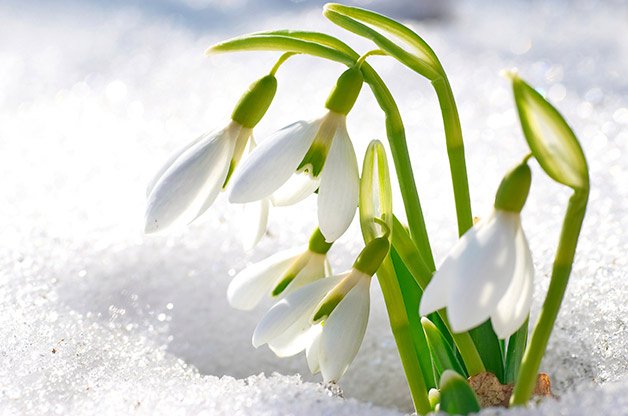
Clarissa Rosinski is from sunny Riverside, California where many of her fondest family memories were related to 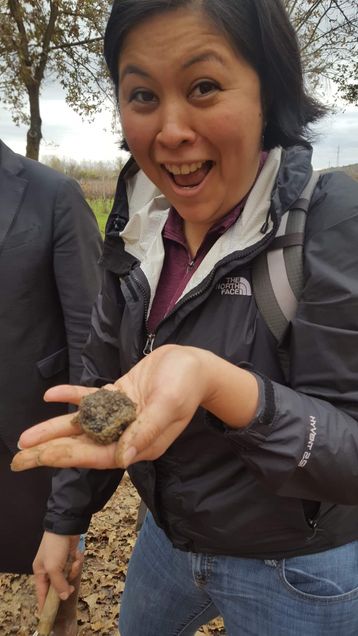 food. She spent a lot of time as a child in the kitchen with her great grandmother preparing fresh tortillas, refried beans, and sopas. It was with her nana that she spent time baking loaves of bread, cakes, cookies, and pies. The ideas of food, family, and culture have been interwoven ever since.
food. She spent a lot of time as a child in the kitchen with her great grandmother preparing fresh tortillas, refried beans, and sopas. It was with her nana that she spent time baking loaves of bread, cakes, cookies, and pies. The ideas of food, family, and culture have been interwoven ever since.
Clarissa left home at 19 years old to enlist into the United States Air Force. She joined with two goals in mind; see the world, and graduate college. She has done just that. Eighteen and a half years later and she has been stationed in 7 countries, visited over 32 more, and enjoyed the experiences of countless cities. Her job in the military is Services, which mainly focuses on Foodservice and lodging hospitality. Interestingly, this led her to complete her B.S. in Hotel and Restaurant Management from Northern Arizona University.
Her passion for food has always been there, but it wouldn’t be until she was in her 20s that she started to realize the truth: Food may be sustenance, but it also brings you memories and experiences with others. It’s a language of its own, but also an art. Not everyone gets it. Clarissa did not see this immediately, but she has finally realized her truth. Food is nature, it’s beauty, its art.
As Clarissa nears the end of her Military career, she looks forward to what lies ahead. She is excited to be pursuing the Food Studies Certificate and plans to continue with the full Gastronomy program at Boston University. The opportunity to continue learning about food and what inspiring notions come forth drives her to learn more.
Kelsea Knowles joins the BU Gastronomy program from Toronto as an online student. She is 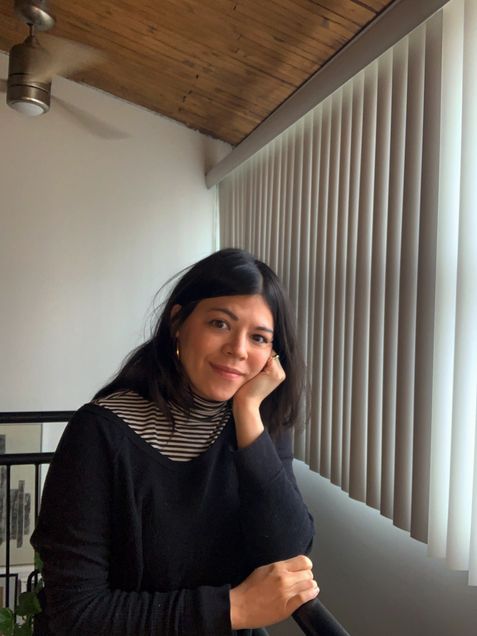 currently a professional in the hospitality sector in a director level role working as the Chief of Staff and Executive Assistant to a celebrity chef.
currently a professional in the hospitality sector in a director level role working as the Chief of Staff and Executive Assistant to a celebrity chef.
She’s worked in hospitality since she was 15 years old and loves all things food from food media to eating to cooking to food waste & security. Her original plan was to work in the Visual arts sector and she has a Bachelor of Fine Arts from OCAD University. Pursuing a career in the Arts didn't offer her the same high energy, physical stimulation, and social element that hospitality did so she returned to restaurants.
After 10 years working for celebrity Chef Susur Lee, Kelsea is interested in a career shift but not yet sure in which direction. She’s hoping to expand her knowledge of food & food culture in this graduate certificate with the possibility of expanding into a Master’s degree. Once the graduate certificate is completed, she plans on complimenting her education in Food Studies with a hands-on culinary education. She’s been offered a position at Ecole Ducasse (Chef Alain Ducasse) Paris for an intensive 6 month but due to COVID-19, has been forced to defer.
Having spent the last year in and out of work due to COVID-19, Kelsea has spent a lot of time cooking and experimenting in her own kitchen and exploring the ways in which we nourish ourselves physically, spiritually & mentally all while exploring her own mixed-race identity. While her exact focus is not yet decided, her areas of interest are writing, media, gender & race studies and how they all intersect within the food world. Her current project is working on publishing a cookbook in 2023.
Kelsea is most excited about returning to an environment ripe with learning and sharing experiences with like-minded individuals.
A West Coast native, Diana Martin lives in San Francisco and comes from a career in education non-profit. Growing 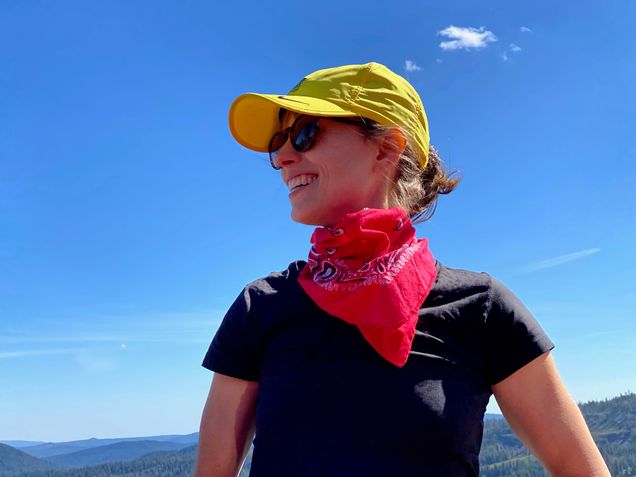 up in Portland, Oregon, she made her way to Los Angeles for undergrad where she crashed head first into the awe-inspiring deliciousness that is California produce. Dining all over L.A., a love of taco trucks and avocados grew deep where it has only continued to flourish in the Bay Area.
up in Portland, Oregon, she made her way to Los Angeles for undergrad where she crashed head first into the awe-inspiring deliciousness that is California produce. Dining all over L.A., a love of taco trucks and avocados grew deep where it has only continued to flourish in the Bay Area.
The vast majority of her professional life has been with Reading Partners, but Diana has dabbled in the frozen dessert industry with titles such as "scooper", "trainee" and "gelato/barista extraordinaire." She still loves ice cream and is an avid sampler (within reason) even after giving out countless samples to eager customers.
Food takes up the majority of Diana's brain space outside of, and also during work. She loves to try new recipes and create something new from whatever leftovers linger in the fridge. Diana considers herself a darn good amateur sourdough bread baker and can't help but to find new ways to incorporate sourdough starter because it hurts her heart to compost it all.
Diana is passionate about community, laughter, staying active, sustainable practices and eating well. The Gastronomy program is an opportunity for a total career shift and Diana is eager to make connections, learn, eat, learn more, and see where this journey leads!
Mackenzie Lombardi is from central Pennsylvania, born and raised. Wanting a bigger experience than her small 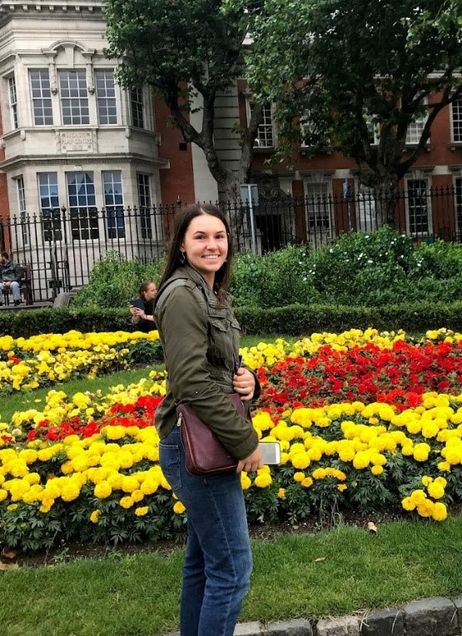 town, she attended The Pennsylvania State University and graduated with a degree in Nutritional Sciences. She then came up to Boston to complete her dietetic internship at Simmons University.
town, she attended The Pennsylvania State University and graduated with a degree in Nutritional Sciences. She then came up to Boston to complete her dietetic internship at Simmons University.
During her internship she saw how individual’s food preferences were influenced by more than just taste or nutritional need. This led her to become more interested in food studies and how food choices are influenced by one’s gender, cultural background, and perceived moral value. After completing her internship, this once suburban girl decided to stay in Boston for its rich history and vast opportunities. Living in Boston has introduced her to food cuisines that she never had the chance to try back in PA, where it was either her dad’s Italian cooking or restaurants serving the typical American Cuisine. (She is happy to report that central PA has diversified their food cuisines since the early 2000’s!)
She recently became a Registered Dietitian and realized that the dietetics world wasn’t fulfilling her true interests. Enter, BU’s Gastronomy program! She is excited to examine women’s role in the kitchen and how women perceive their identify through the food they eat. Mackenzie can be found wandering grocery store isles, watching movies, or hiking in her free time.
Originally from the fertile soil of Fresno, CA, Shant Farsakian was steered towards his love of food by 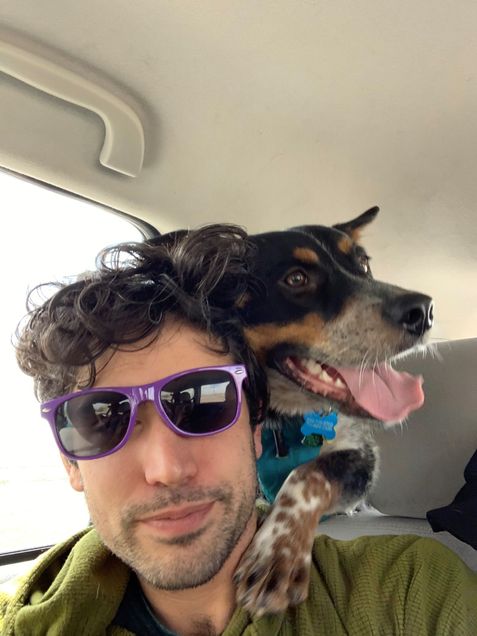 his green-thumbed Armenian family. He spent much of his youth pulling fresh fruits and veggies from their backyards, often eating them straight off the trees or vines. These close, special relationships with food and flavor forged a passion that he has since been exploring with gusto.
his green-thumbed Armenian family. He spent much of his youth pulling fresh fruits and veggies from their backyards, often eating them straight off the trees or vines. These close, special relationships with food and flavor forged a passion that he has since been exploring with gusto.
While completing his B.A. in Psychology at California State University, Northridge in 2012, Shant began brewing beer with his roommate in their apartment. He fell in love with the entire process (and product) and thus began a career in craft beer, eventually moving south to San Diego to be at the heart of the movement. There he spent 4 years learning as much as he could about the sudsy amber stuff, from the recipes and flavors to the histories and cultures. With the
latter becoming his focus, Shant became a student of the culture of cuisine. He moved quickly from just beer to all foods and beverages, using his time not working in the industry to travel and taste.
A move to Denver, and a pandemic later, and Shant has decided to bolster his self-education with a formal one in BU’s Gastronomy Program. Here he plans to polish his food writing and researching skills to help him preserve not only the food and culture of his Armenian ancestry, but that of any group whose people face the threat of racism and institutionalized genocide. He believes acceptance of all food as equal is the first step to accepting all people as such.
Leading up to this moment Abby Kohn has spent nearly a decade refining her skills as a Pastry Chef at 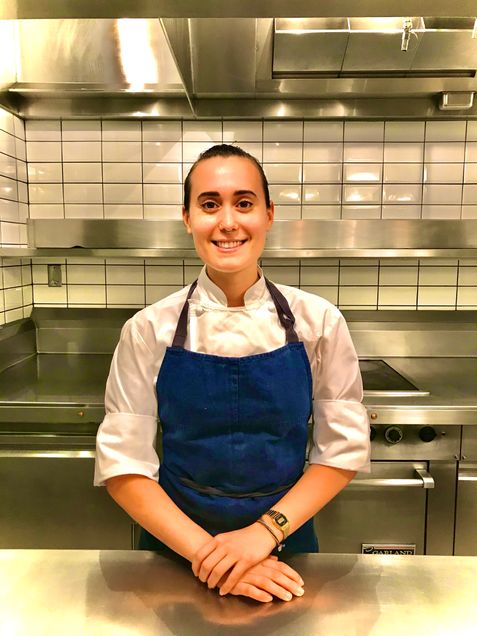 three out of five of Manhattan’s Michelin 3-star establishments. Presently she is the Pastry Sous Chef at Thomas Keller’s Per Se. It was the demand for details, inspiring ingredients, and opportunities for collaboration that first drew Abby to the culinary world, and second made a home for her within the Thomas Keller Restaurant Group family. Much of her individual success is measured by a spirit of peer mentorship inherent within the TKRG family. At this point in her career, Abby is ready to expand her understanding of food beyond the kitchen and into the world.
three out of five of Manhattan’s Michelin 3-star establishments. Presently she is the Pastry Sous Chef at Thomas Keller’s Per Se. It was the demand for details, inspiring ingredients, and opportunities for collaboration that first drew Abby to the culinary world, and second made a home for her within the Thomas Keller Restaurant Group family. Much of her individual success is measured by a spirit of peer mentorship inherent within the TKRG family. At this point in her career, Abby is ready to expand her understanding of food beyond the kitchen and into the world.
She intends to achieve this by obtaining her MLA in Gastronomy. It is her hope that through a combination of skill, experience, and learning she can open her mind to thinking about food from another perspective. In spite of the fact that the synthesis of ideas remains open-ended. Abby is determined that she will be able to find and make connections in her learning that will ultimately create a meaningful contribution to the culinary world.
Amber Sampson is an artistic, creative, passionate, activist, public speaker, researcher and chef who 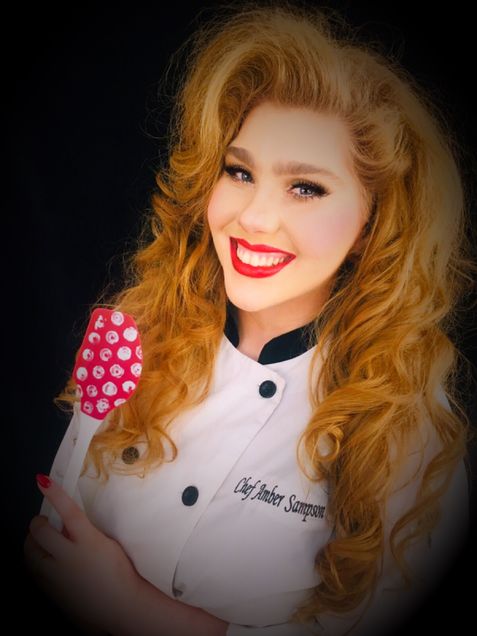 loves exploring the world through food. Always hungry, her cravings for food research started as rumblings in her youth when she became incredibly sick with a brain tumor. From her hospital bed, the escapism and beauty of food and travel TV gave her the courage to fight her illness and win. As a healthy adult, Sampson’s TV idols of Julia Child and Jacques Pépin became career heroes.
loves exploring the world through food. Always hungry, her cravings for food research started as rumblings in her youth when she became incredibly sick with a brain tumor. From her hospital bed, the escapism and beauty of food and travel TV gave her the courage to fight her illness and win. As a healthy adult, Sampson’s TV idols of Julia Child and Jacques Pépin became career heroes.
Currently, Sampson holds a degree in Cultural Anthropology and a second degree in Food Systems Sustainability. She is a trained professional Chef, with a degree in Culinary Arts and Nutrition. Using food as a universal language, her research focuses on the relationship between food and culture. Specifically, Sampson enjoys studying the anthropological relationship between food and culture in ancient times. Her work brings present day relevance to ancient meals, people and customs, giving others a taste and connection to our delicious past, revealing a more sustainable and understanding future. You can find Sampson in the warm Southwestern desert of Arizona, teaching culinary, foraging, cooking, researching, gardening, and exploring our tasty past.
New Gastronomy and Food Studies Students, Spring 2021
We look forward to welcoming a wonderful group of new students into our programs this spring. Enjoy getting to know a few of them here.
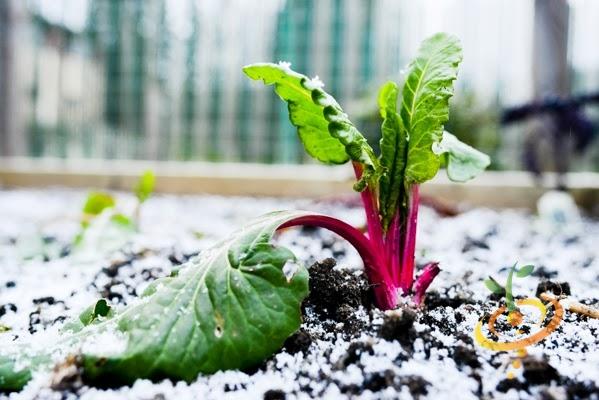
Like any good story, it started with a love of bagels. It might have been the New York in her blood, but Emily Bowers 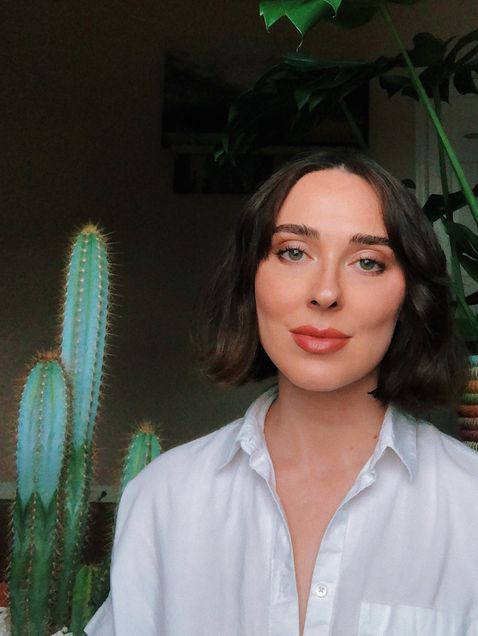 left the city circa. 1997 and was raised in the land down under where everything is too large and trying to kill you. Florida.
left the city circa. 1997 and was raised in the land down under where everything is too large and trying to kill you. Florida.
Earning a BBA from Belmont University in Music Business and Audio Engineering, Emily found herself in Nashville with nary a job in sight. Then, her love of bagels proved useful as she began her restaurant career at the newly opened bagel shop across from the university. From there she went on to manage restaurants until the love of bagels could sustain her no more. Exhausted, Emily returned home to Florida just in the nick of time.
COVID-19 and the Black Lives Matter movement exploded and Emily was left debating how she could best contribute to the education and reparations towards the Black and Indigenous communities in the United States. Books were ordered and read, but still she was indecisive. Then, one fateful night, she was watching Ancient Aliens with her dad (his choice, but no one was complaining) and the narrator began discussing the culture of the Maya. She paid closer attention because her favorite newly purchased book discussed the food systems of the Aztec, Inca, and Maya and she was enthralled. That’s when the question hit her: is there somewhere she could study food systems and their intersection with culture and sovereignty? And here we are. When not eating bagels, Emily can be found with her black cat Kylo Ren watching the Great British Bake Off, playing Pokémon on her Switch, or hiking local trails.
It’s the Winter of 2016, and Michael Karsh wakes from a restless sleep on the floor of a rental van barreling down the  I-95 in the wee morning hours. The van pulls into a rest stop for yet another Dunkin’ Donuts breakfast as Michael wearily begins another day on his band’s first tour.
I-95 in the wee morning hours. The van pulls into a rest stop for yet another Dunkin’ Donuts breakfast as Michael wearily begins another day on his band’s first tour.
While unremarkable at first glance, this prophetic vignette illustrates the birth of Michael’s passion for food.
Originally from Los Angeles, CA, Michael studied Music at Brown University with the intention of entering the music business. Landing a music management/publishing job in New York after college, Michael seemed to be achieving his goals; however, his creative pursuits beckoned, and he quit his job after a year to become a professional musician and hit the road with his band.
The intensive demands of professional touring forced Michael to reckon with his love of food and the cornucopia of unhealthy options on the road. The rigors of the road demanded he answer a seemingly simple question: “What is healthy food?” Michael gradually adopted a plant-based diet, and before long, completely transformed and improved his lifestyle, health and well-being, as well as his performance level. Fascinated and motivated by his personal transformation, he immersed himself in research on human biology, dietary interventions and biomarker data to explore the relationship between diet and health. Before long, his coping strategy for a physically demanding career had blossomed into one of his greatest passions.
While Michael continues to pursue music full-time in Brooklyn, NY, he hopes to synthesize his own experiences in health and wellness with BU’s Food Studies curriculum to address some of the most critical global challenges surrounding food sustainability, climate change and public health.
José Lopez Ganem is an emerging thinker on cacao and chocolate conducting interdisciplinary research drawing on the fields of history, government, management, religion, and trade. Most 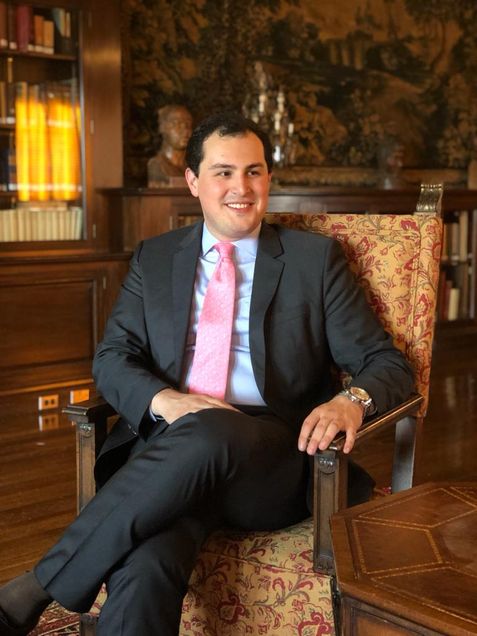 recently, he developed several projects for the Fine Cacao and Chocolate Institute (FCCI), where in 2019/20 he was the first FCCI Latin American Cultural Exchange Fellow, representing his native Mexico. He is also a continuing instructor for FCCI Cacao Academy, an online platform developed by FCCI. He has presented his work at several scholarly forums such as Harvard University, the Culinary Institute of America, Illinois State University, the European Business School Paris, among others. His professional experience also includes an engaged period in the food industry in New York City, briefly interning at the top-rated Eleven Madison Park restaurant and at the extinct FIKA Chocolate Lab.
recently, he developed several projects for the Fine Cacao and Chocolate Institute (FCCI), where in 2019/20 he was the first FCCI Latin American Cultural Exchange Fellow, representing his native Mexico. He is also a continuing instructor for FCCI Cacao Academy, an online platform developed by FCCI. He has presented his work at several scholarly forums such as Harvard University, the Culinary Institute of America, Illinois State University, the European Business School Paris, among others. His professional experience also includes an engaged period in the food industry in New York City, briefly interning at the top-rated Eleven Madison Park restaurant and at the extinct FIKA Chocolate Lab.
He graduated magna cum laude from the Culinary Institute of America (CIA) in 2018 with a B.B.A. in Food Business Management, accompanied by a concentration in Advance Wine Studies. During his permanence at CIA, he completed various educational and trade certifications at the Wine and Spirits Education Trust (WSET) and the Society of Wine Educators (SWE). He was awarded in 2017 with Kopf Scholarship for Wine Studies, given by Kobrand Corporation to a selected group of graduating students of Boston University, Cornell University, Johnson & Wales University, and the CIA. In 2017/18 he endured and successfully completed training in Japanese Cuisine and Culture sponsored by the Suntory Corporation and the Minister of Agriculture, Forestry and Fishery (MAFF) of Japan.
In his spare time, José continues to collaborate as a non-resident research fellow at FCCI and Harvard University, both under the guidance of Dr. Carla D. Martin. You can find him behind a non-fiction book or a printed British newspaper, all while enjoying over-steeped high quality black tea.
Born in the Midwest and raised in the South, Samantha Maxwell was forced to learn how to cook when she started 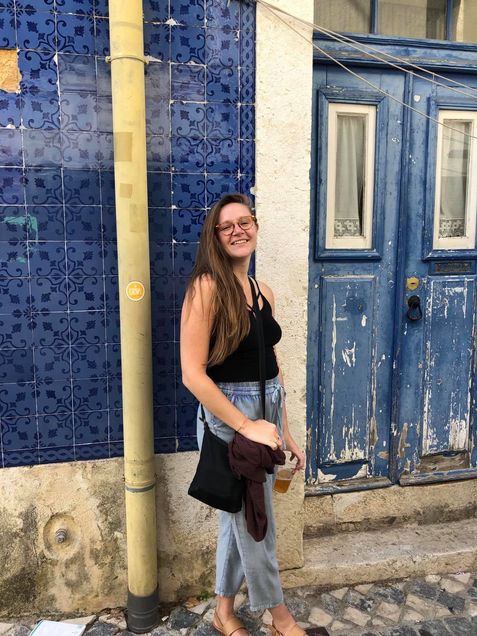 exploring veganism in college. It didn’t stick, but it opened her up to a whole new world of ingredients that she had never encountered until that point.
exploring veganism in college. It didn’t stick, but it opened her up to a whole new world of ingredients that she had never encountered until that point.
After graduating with a BA in English literature, she began a freelance writing career, which provided her enough freedom to travel. This led her to a love of both quiet solo breakfasts and raucous group dinners with generous strangers. When she realized that most of her travel plans revolved around specific restaurants or dishes, she knew that she wanted to make food her focus.
Now working in food media as a writer and editor, Samantha is excited to take her interest in food to a deeper level to explore not just new flavors but also the cultures they come from and the social and political realities that undergird them. She’s interested in learning about how food connects different cultures and how we can use food to foster greater understanding and compassion for those who may live — and eat — differently than we do.
When she’s not writing or attempting a new recipe, Samantha enjoys hiking, exploring cities, doing yoga, reading, and people watching at coffee shops. She’s new to Boston and welcomes restaurant, bookstore, and plant shop recommendations.
Course Spotlight: Culture and Cuisine of the African Diaspora
An invitation from Corinne DaCosta, Professor for Culture and Cuisine of the African Diaspora:
Hello,
As I think about the world today, yesterday, and the tomorrows that are in the future; the cycles, connections, and continuances are what captivate my attention. Our mental muscles are searching for and connecting the dots that were left by our foremothers, forefathers, and ancestors. The dots are us and are within us, and shape our world. Understanding your place on the planet begins for a lot of people in the kitchen or on their plate. Culture, society, unwritten, unspoken rules, and laws often say ‘you’ are ‘this’ so ‘you’ eat ‘that’. As it is our brains attempt to connect and understand. We should not feel bad for this type of thinking or rationale, but we must challenge ourselves to look beyond, look deeper at how these classifications happen, and reframe them if need be. Food, its culture, and personal identity are intrinsically linked for many reasons, but one that is rather simple is that the act of eating is a bond with self. An experience that involves the earth, ‘self’, and at times everyone all across the globe.
Eating is an intimate relationship between tangible and tactile that is transformed into embodied energy. As far as diaspora connections one that is personal to me is the link between the drink of the south, Sweet Tea, and the fermented beverage that is all the rage, Kombucha. As someone who was raised with southern sensibilities, my after-school snacks were often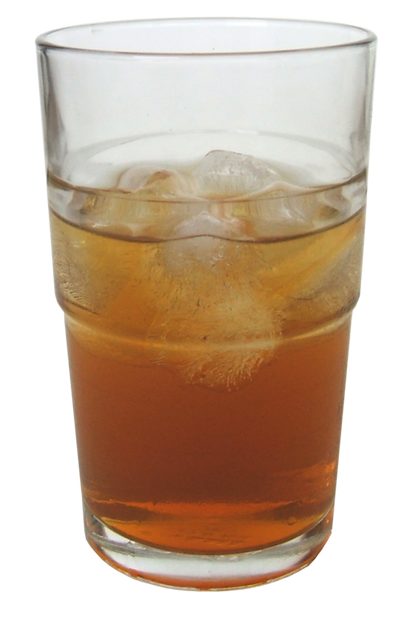 accompanied by a glass of sweet tea, made by my great-grandmother. She would make weekly batches to never run out and quench the thirst of my rather large extended family. To make kombucha one must first make sweet tea, then add patience, a SCOBY, and some time. I often ponder on how this serves as an allegory for the African diaspora. How something was coveted, then fermented with numerous experiences, innovations, global explorations, and institutions to be changed into something different but beautiful, a little funky, but ‘good’. I am most familiar with the ‘black’ American or African American diasporic reality, but from my research, this seems to apply to other facets of the vast global community that is the African diaspora. My mother and I now brew kombucha, and we begin at the stove as my great-grandmother would with tea bags and sugar. The versatility of Kombucha reflects the diaspora as well, there are many flavors, colors, and tastes that serve everyone who would like a glass. If you are parched and would like a refreshing perspective on the cuisine and culture of the African diaspora, then perhaps this course is one that you will enjoy and I invite you to take it with a few grains of salt and a glass of Sweet Tea or Kombucha.
accompanied by a glass of sweet tea, made by my great-grandmother. She would make weekly batches to never run out and quench the thirst of my rather large extended family. To make kombucha one must first make sweet tea, then add patience, a SCOBY, and some time. I often ponder on how this serves as an allegory for the African diaspora. How something was coveted, then fermented with numerous experiences, innovations, global explorations, and institutions to be changed into something different but beautiful, a little funky, but ‘good’. I am most familiar with the ‘black’ American or African American diasporic reality, but from my research, this seems to apply to other facets of the vast global community that is the African diaspora. My mother and I now brew kombucha, and we begin at the stove as my great-grandmother would with tea bags and sugar. The versatility of Kombucha reflects the diaspora as well, there are many flavors, colors, and tastes that serve everyone who would like a glass. If you are parched and would like a refreshing perspective on the cuisine and culture of the African diaspora, then perhaps this course is one that you will enjoy and I invite you to take it with a few grains of salt and a glass of Sweet Tea or Kombucha.
Stay Sharp,
Corrine DaCosta
Professor for Culture and Cuisine of the African Diaspora
Culture and Cuisine of the African Diaspora (MET ML 629) is a 14-week online course, beginning on January 25. This 4-credit course is open to graduate students and advanced undergraduates. Non-degree students may also register. Registration information can be found here.
| Course Description: The foodways of the people displaced from the African continent are interwoven with many societies, cultures, and cuisines across the globe. In this course, we will study five geographic regions of Africa; north, central, east, west and south. The list of the countries that encompass each region will follow. Cookbooks, maps, songs, poems, and even some folklore will be used as texts to analyze and add context to the history of the people of the diaspora. This course will have real, and courageous, and respectful conversations including race and power and how those two elements are embedded into the food systems in North America, Central America, South America, the Caribbean and Europe. We will trace ingredients that came with the enslaved people and track their integration into cuisines and cultures (agriculture, pop culture, aquaculture etc.) as a collective group and then independently as a capstone course project. |
Cookbooks & History: Lemon Faludhaj
Students in Cookbooks and History (MET ML 630), directed by Dr. Karen Metheny, researched and recreated a historical recipe to bring in to class. They were instructed to note the challenges they faced, as well as define why they selected their recipe and why it appealed to them. Here is the final essay in this series, written by Salma Serry.
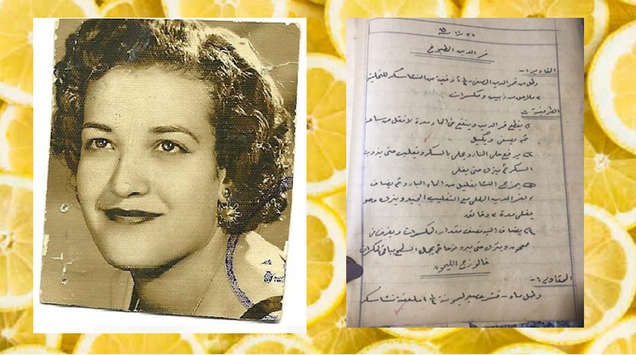
She was always the first one to wake up in the house. I would get up around 7’oclock in the morning -despite it being the summer holiday- and I would find teita Samira (teita: grandma) sitting in her bright little sewing room singing along with her little portable radio. She had a beautiful voice and she loved singing while doing chores in the house. After flipping through some German Burda fashion magazine for patterns or rummaging through her cookie-tin that turned into a sewing box, she would head to the kitchen to make breakfast and start with her lunch preparations. The kitchen was her empire. That was where she would spend hours tirelessly putting together wonderful creations for every day meals, big weekend family lunches and glorious birthday table spreads, the likes of which were- and still are- hard to find in bakery shops.
A few weeks ago, I called my mother in Dubai to ask her about some cookbooks that teita had given to my aunt before she passed away, and to my surprise, she remembered recently finding an old notebook which teita had given her when she first got married, about thirty years ago. She wrote the notebook herself when she was just about twelve years old in 1949 in school as part of her home economics subject. It was fascinating to know of its existence, having spent years searching around Cairo for old recipe collections and begging owners to let me take a look at them or borrow them for my research. Little did I know, I had one by my very own grandmother lying around in the house I grew up in.
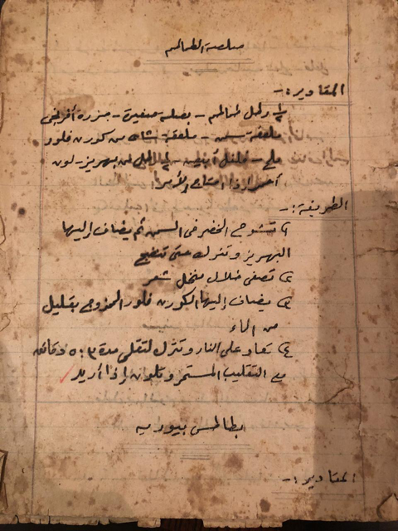
Forty-seven recipes. Every recipe is dated. Her handwriting is so neat and meticulous, one would never guess it’s by a twelve-year-old. Unfortunately, the notebook has lost its cover, so the first and last pages are barely hanging in place, with many tears and a lot of little splatter-stains that have turned a homogenous brown over the years. The insides are intact and in good condition. Almost all recipes are marked with a red check and, in some places, they read “well-done” and “your efforts are appreciated.” I suppose these comments must have been written by her teacher.
As I flipped through the delicate pages and the recipes that vary from French Baton Salé (localized with a sprinkle of cumin seeds) to traditional Eid Kah’k cookies, I stopped at a rather peculiar recipe title: Lemon Faludhaj (Faludhaj: starch-based pudding). You see, I have never seen it any of the modern or contemporary cookbooks of Egypt nor have I heard any Egyptian speak of it. My own limited knowledge of it is from two sources, each a thousand years apart from the other. The first is my experience having grown up in Dubai where Indian-style cafeterias sell a street dessert named Faloodeh/Falooda made up of thin starch noodles swimming in a semi-frozen syrup- and sometimes icecream- topped with fruits and nuts. I later came to know that it is widely popular in Iran, India, Afghanistan, and Pakistan. But my knowledge of it remained limited within these geographies until I found it in a 10th century medieval cookbook from Baghdad!
In fact, the 900-something-page book, which today is translated into English by Nawal Nasrallah, features an entire chapter dedicated to only faludhajs: Faludhaj for the Caliphs, Faludhaj for the Princes, Chewy Faludhaj, Thick Faludhaj and the list goes on. In her notes, Nasrallah explains how, etymologically, the word is derived from the Persian paluda, which means among other things “strained,” translucent, and of a jelly-like consistency. She notes that the chewy type of faludhaj is very close to today’s “Turkish delight” which we call in Arabic Rahat Al Hulkum (Arabic for throat’s comfort), and which I believe has been translated into Turkish to to “lokum” (note the phonetic similarities between hulkum, meaning throat in Arabic and Turkish name for the dessert,“lokum”).
The same book generously provides medicinal advice and food characteristics based on the humoral system (see Galen’s humoral theory). According to the book, Faludhaj has characteristics that are especially “good for the throat,” lungs, and fatigued bodies. And interestingly, my aunt tells me that teita used to make faludhaj whenever any of her children had a sore throat. She distinctly recalls a time when she was about 8 years old and had her tonsils removed when teita made her some in strawberry flavor. How can a piece of knowledge travel through a thousand years? And perhaps more interesting, how does it die out within two generations (between my grandmother and my rather clueless self) in a span of 50 years after having survived more than a thousand years? Almost no one I know in Egypt recognizes the recipe anymore.
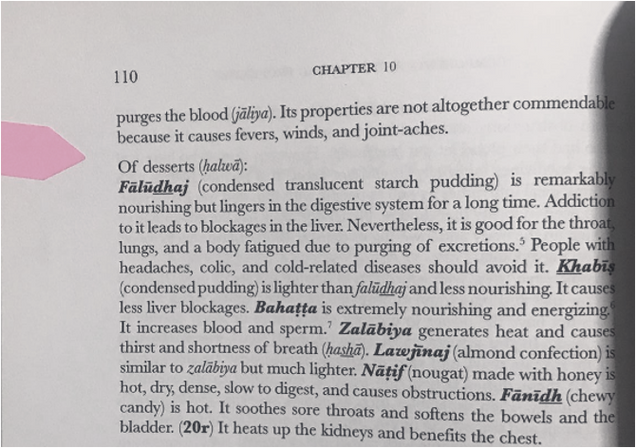
In any case, I went ahead to try out teita’s recipe below which was incredibly quick to prepare with minimal ingredients, but for some reason it did not specify whether a tablespoon or teaspoon is needed for the amount of cornstarch. The unit used for measuring water is a pound (that was before Egypt changed to metric system later in the 70s)- which equates to almost two cups of water. I started out with one teaspoon and ended up having to use 4.5 tablespoons to get to a thick pudding consistency. Maybe they had a stronger type of cornstarch? In comparison to the 10th-century recipe, the starch used is wheat-based, it calls for sesame oil as well as honey instead of sugar in addition to infusing saffron for coloring and perfuming.
Lemon Faludhaj
Ingredients:
2 cups of water
Juice of 1 lemon and its zest
1.25 spoon of cornstarch (I ended up having to use 4.5 tbsp)
Sugar (recipe doesn’t specify amount but I used 5 tbsp)
Instructions:
Melt cornstarch in cold water.
Rub the sugar into the lemon juice.
Add the sugar and lemon juice mix into the water along with the zest and bring to a gentle simmer.
Add the cornstarch mix and stir well continuously under low heat until the starch is cooked.
Pour into bowls and garnish with nuts if desired.
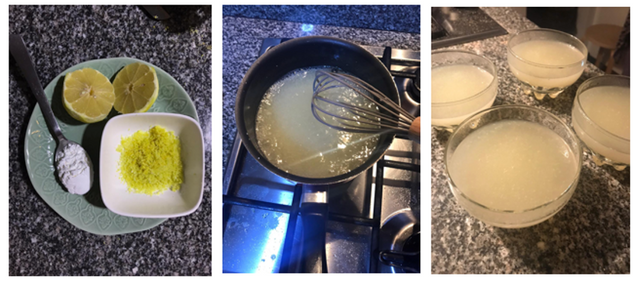
After leaving it to sit overnight in the fridge, I tried it the next day and it had a good pudding consistency. It was really rather refreshing - good to pair after heavy dinners perhaps or as a summer snack. If I were to make a few tweaks, I would only use half the amount of zest as it was a little overpowering and slightly bitter, and I would also experiment with it again replacing sugar with honey and adding a little sesame oil or some fat as the medieval recipe calls for – something a colleague also pointed out that could enhance the thickening process (thank you Sarit!).
All in all, it was a fascinating experience. A reliving of the past. A reenactment of imagined histories. It made me think of my grandmother as a little girl in school perhaps learning to cook with starch for the first time. It made me think of my aunt finding cooling comfort in its soft and gentle texture after her tonsil operation, a medieval maid preparing it for a sick little prince, and an Abbasid caliph enjoying its saffron-perfumed silkiness in his palace garden after a hearty lunch. All these people and places connected with this creation that carries a name of a dish with variations still popular in the Arab Gulf, India, Turkey, and Iran. And I have my late teita, Samira, to thank for extending this link to me.
Bibliography
Attia, Samira. 1948-1949. Personal Home Economics School Notebook. Cairo.
Works cited
Ibn, Sayyār -W.-M. N, Nawal Nasrallah, Kaj Öhrnberg, and Saḥbān Murūwah. 2007. Annals of the Caliphs' Kitchens: Ibn Sayyār Al-Warrāq's Tenth-Century Baghdadi Cookbook. Leiden, the Netherlands: Brill NV.
Cookbooks & History: Stewed Pumpkin
Students in Cookbooks and History (MET ML 630), directed by Dr. Karen Metheny, researched and recreated a historical recipe to share with the class. They were instructed to note the challenges they faced, as well as define why they selected their recipe and why it appealed to them. Here is the next essay in this series, written by Kris Kaktins.
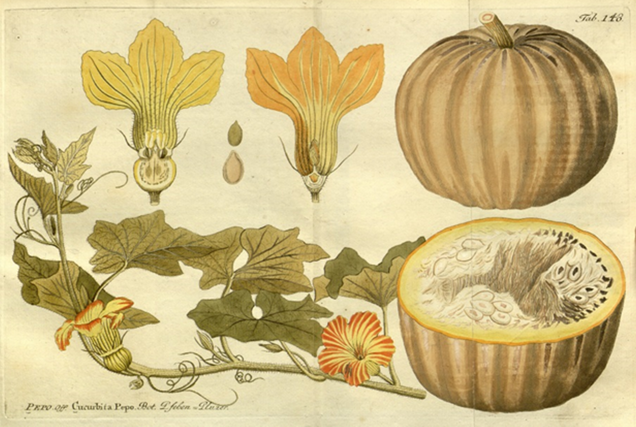
Pumpkins are a fruit native to North America (OED Online 2020; Terrell 2017). In looking for a historical recipe to recreate, I searched for pumpkin recipes since I had three sugar pumpkins that had been harvested from my garden this summer. It could be that recipes including pumpkin were not listed under the fruit, however, I perused over 20 cookbooks on the Feeding America website (https://d.lib.msu.edu/fa) looking for “pumpkin” in indices before finally finding some options. Most references were for pumpkin pie of which I am not a fan. Maria Parloa’s 1883 Miss Parloa's New Cookbook: A Guide to Marketing and Cooking held a recipe for pumpkin soup. This seemed promising, however the final instructions required three slices of stale bread. This would mean baking a loaf of bread and allowing some slices to stale. I did not have time for this. F.L. Gillette’s 1887 White House Cook Book: A Selection of Choice Recipes Original and Selected, During a Period of Forty Years' Practical Housekeeping had three pumpkin pie recipes, but also one for “stewed pumpkin” (Gillette 1887, 190). I had my recipe.
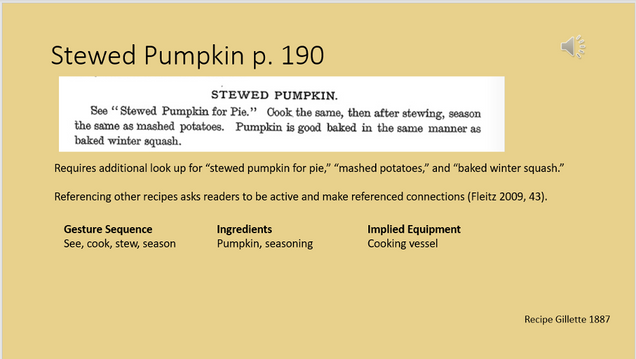
Mrs. Fanny Lemira Gillette published her cookbook in 1887 at 60 years old “at the urgent request of friends and relatives” (Michigan State University 2020). Dedicated to “the wives of our presidents” for no apparent reason other than perhaps marketing, she defines her audience as housekeepers and assures readers that she has “40 years of practical housekeeping” and the recipes have been vetted: “after trying and testing a recipe, and finding it invariably a success, and also one of the best of its kind, to copy it in a book… (Gillette 1887).” Her recipes are arranged in the “single-paragraph narrative structure of early print recipes” (Fleitz 2009, 59). Gesture sequences, or cooking instructions, are simple and authoritative. These are much harder to follow than the multimodal formats of today that separate out ingredients and measurements from the instruction. Her wording does not freely evoke the senses and does not readily encourage the reader to reconstruct herself as the coauthor. The layout has nominal margins and does not allow for the reader to add her own notes and share ownership of the recipes.
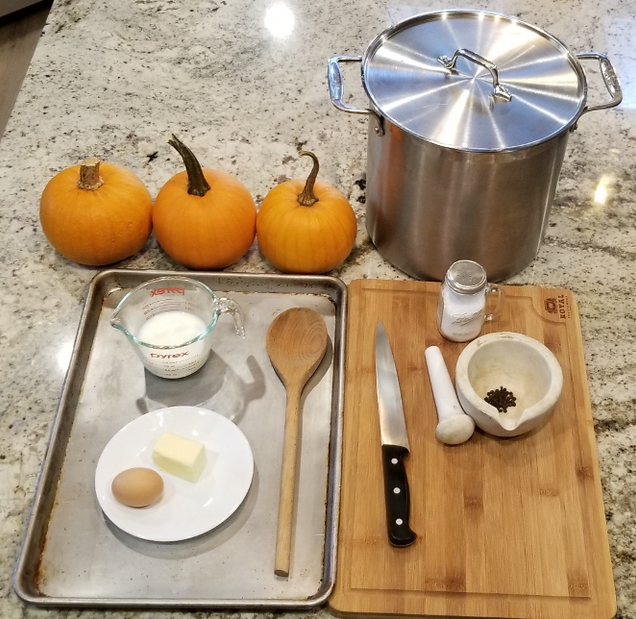
As soon as I begin the recipe, I am ordered to refer to other recipes and must look up “stewed pumpkin for pie,” “mashed potatoes,” and “baked winter squash.” Fleitz notes that referencing other recipes asks readers to be active and make referenced connections (Fleitz 2009, 43). I do not feel that I am making active, reference connections, however. I merely feel annoyance at having to scroll back and forth through the online scan of the book. Finally, I copy and paste each recipe I need and print them out onto one piece of paper. Now, I am actually ready to start.
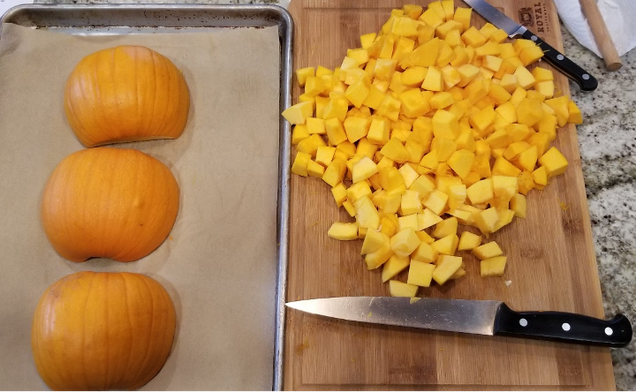
Most recipes have scant cooking or baking times and no temperature, and narrative is used for quantities. There is little standardized measurement in the recipe I have picked, although the back of the book has a measures and weights section. The recipe for “Stewed Pumpkin for Pumpkin Pie” (Gillette 1887, 298) calls for a deep-colored pumpkin. Apparently, there was implied knowledge during that time about size and type of pumpkin. I am asked to pare the pumpkins. As I woefully assess my knife skills and the amount of pumpkin I am losing, I miss my vegetable peeler. Further instructions call for cutting into imprecise sizes such as “thick slices” and “small pieces.” I am instructed to use “very little water” in the pot where I put my prepared pumpkin pieces. When referencing the mashed potato recipe (Gillette 1887, 170) for seasoning, I am struck by the beginning of the first sentence “Take the quantity needed (of potatoes).” Surely, the seasoning amounts would differ if one were making mashed potatoes for four or for 10, but there is no mention of altering the seasoning amounts. Then there is the question of what counts as “seasoning.” Normally, I would think of spices. But it seems more effort to direct someone to a whole new recipe just for salt and pepper. Therefore, I reason that she is including butter and milk as seasoning as well. I need “butter the size of an egg,” a “good pinch of salt,” and “dots of pepper…as large as half a dime.” There is actually a measurement provided for the milk. My assumption is that whole milk would have been used, however, only having 1% milk, I measure out half a cup of that. I also use unsalted butters since it does not specify. There is a little ambiguity in the recipe, however I interpret the overall instruction as stopping the pie filling recipe prior to the colander step and then moving on to “season the same as mashed potatoes,” therefore, I decide that they should be served hot.
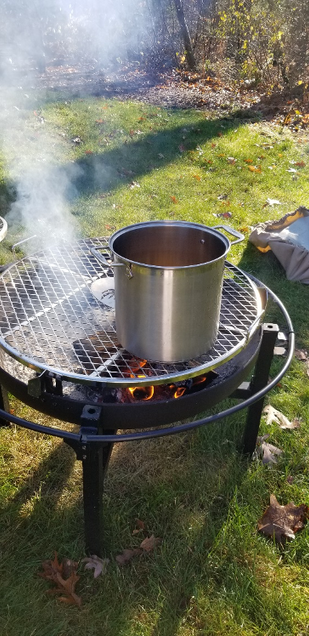
After preparing everything, I head outside to put my pot on a firepit. We only have an electric stovetop, so the firepit is my attempt at using a flame I need to tend to. A little more than an hour in, I decide to put a lid on the pot because the cooking is going very slowly. It simmers away for nearly an hour, until during one of my pot checks I am alarmed to see it severely discolored from soot. I scurry the pot inside and place it on my inauthentic electric stove pot. An hour later, I consider the pumpkin cooked per the instructions. From the start of prep and lighting the fire to having a final product, I have spent almost five hours. I was warned. The recipe mentions cooking the pumpkin “a long time, at least half a day” while “stirring often.” The expectation of the time was that the women will be at the stove all day cooking.
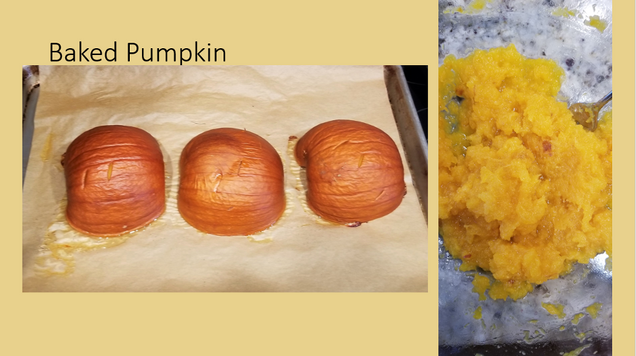 The baked pumpkin recipe (Gillette 1887, 188) turns out to be much easier and faster. I merely need to cut the pumpkin in half and scoop out the seeds. There is no paring or chopping. I cheat and put parchment paper between the baking sheet and the pumpkins. The only ambiguity is that I need to bake in a “moderately hot oven” for about an hour. I decided to cook at 400 degrees Fahrenheit. This recipe calls for no seasoning and ends up as plain mashed pumpkin.
The baked pumpkin recipe (Gillette 1887, 188) turns out to be much easier and faster. I merely need to cut the pumpkin in half and scoop out the seeds. There is no paring or chopping. I cheat and put parchment paper between the baking sheet and the pumpkins. The only ambiguity is that I need to bake in a “moderately hot oven” for about an hour. I decided to cook at 400 degrees Fahrenheit. This recipe calls for no seasoning and ends up as plain mashed pumpkin.
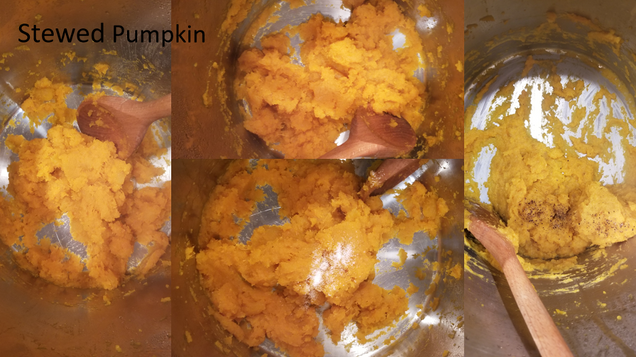
Both recipes, even the one that is seasoned, are bland for my family’s taste buds. I season the stewed pumpkin further, and to the baked pumpkin I add vanilla and sugar so that my family will eat them. The stewed pumpkin has less moisture and darker color, however both products are similar and were I to cook my own pumpkin again, I would surely use the baked method. I conclude my experiment appreciative of the material culture available to me and for the fact that I can choose to spend half a day cooking rather than being expected to do so,
Bibliography
Fleitz, Elizabeth J. 2009. The Multimodal Kitchen: Cookbooks as Women's Rhetorical Practice. Ph.D. dissertation, Graduate College, Bowling Green State University.
Gillette, F. L. 1887. White House Cook Book A Selection of Choice Recipes Original and Selected, during a period of Forty Years’ Practical Housekeeping. Chicago: R. S. Peale & Company.
Michigan State University Libraries. 2020. Gillette, F. L (Fanny Lemira), 1828-1926. Date of access November 12, 2020. https://d.lib.msu.edu/content/biographies?author_name=Gillette%2C+F.+L+%28Fanny+Lemira%29%2C+1828-1926
OED Online. 2020. "pumpkin, n.“ Oxford University Press. Date of access November 13, 2020. https://www-oed-com.ezproxy.bu.edu/view/Entry/154536?redirectedFrom=pumpkin
Parloa, Maria. 1883. Miss Parloa's New Cookbook: A Guide to Marketing and Cooking. New York: C.T. Dillingham.
Shanahan, Madeline. 2015. Manuscript Recipe Books as Archaeological Objects: Text and Food in the Early Modern World. Lanham, Maryland: Lexington Books.
Terrell, Ellen. 2017. A Brief History of Pumpkin Pie in America. Library of Congress. Date of access November 12, 2020. https://blogs.loc.gov/inside_adams/2017/11/a-brief-history-of-pumpkin-pie-in-america/
Food & The Senses: Conducting sensory labs during a pandemic
During the Fall 2020 semester, students in ML 715 Food and the Senses were tasked with conducting sensory labs during the Covid-19 pandemic. Equipped with a kit of basic supplies, students intelligently and creatively developed sensory experiments their classmates could take part in from their homes as we gathered virtually. Using qualitative and quantitative approaches, students successfully accounted for and took advantage of the in-home setting and virtual interaction mode in their research on sensory experience.
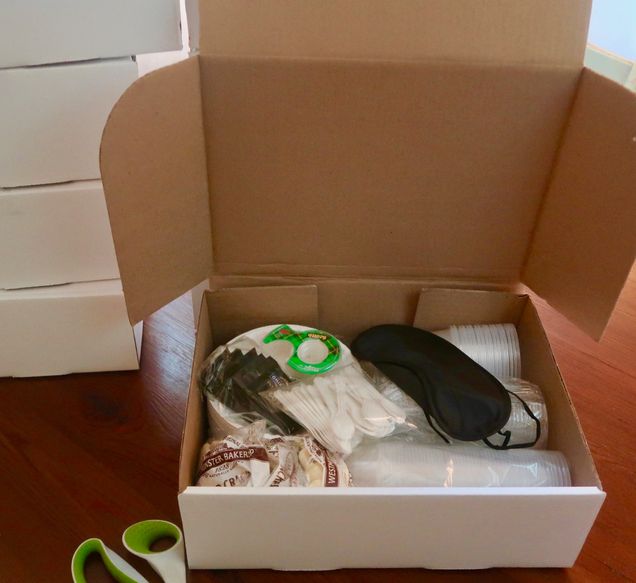
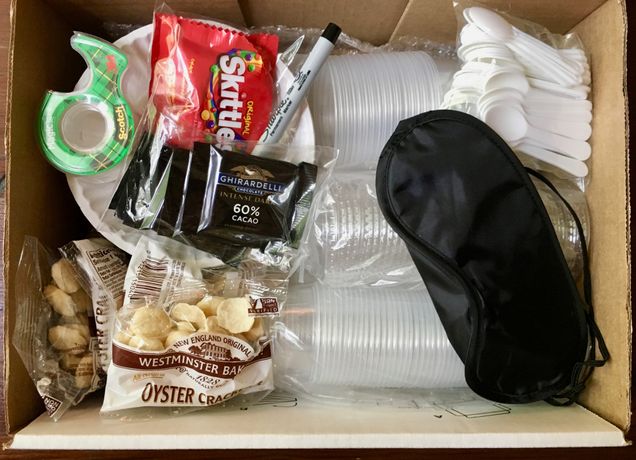
Sound Lab
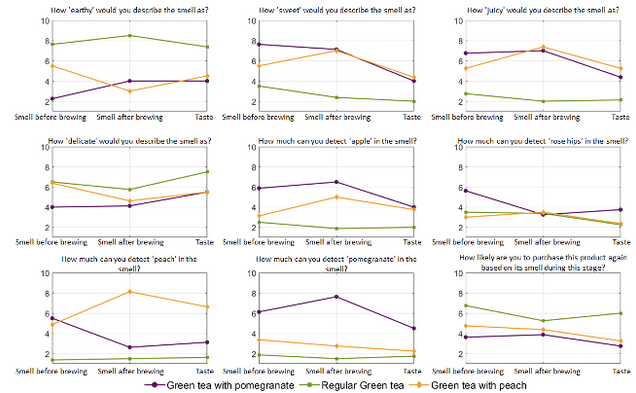
Taste and Flavor Lab
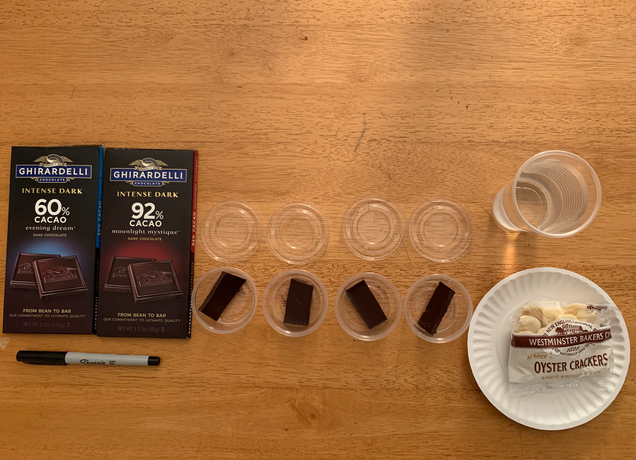
Sight Lab
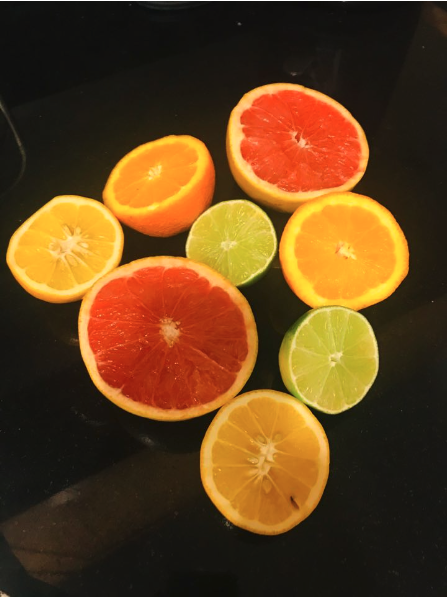
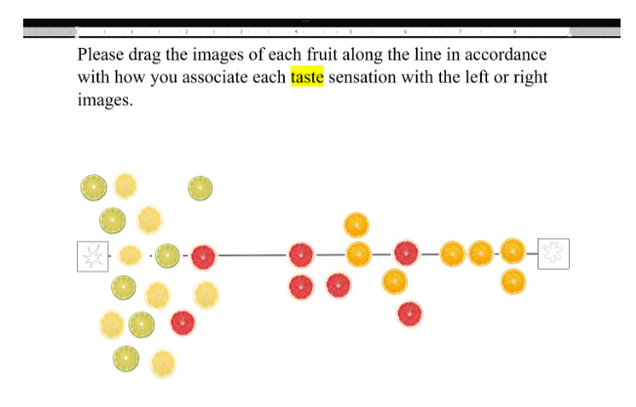
Touch Lab
Kate Zheng and Ester Martin
Can we touch and feel delicious without tasting? This lab explored touch as part of the multi-sensory experience of flavor and its connection to emotion. The feel of steak gives us information on how well cooked it is. How does the touch modality also influence our overall perception of flavor? How does touch influence enjoyment and disgust?
